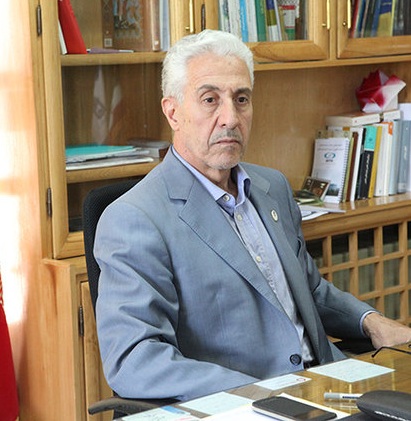Article: How green is your campus?
Universities are working to bring sustainability to their campuses and classrooms, and could serve as a model for other institutions looking to go carbon-neutral. But there's no single way to grade the initiatives.
Amanda Leigh Mascarelli
 Northern Arizona University is one of more than 600 colleges and universities that have signed up to an agreement to go 'green'.NORTHERN ARIZONA UNIV.
Northern Arizona University is one of more than 600 colleges and universities that have signed up to an agreement to go 'green'.NORTHERN ARIZONA UNIV.On a typically muggy day in late August, some 1,300 incoming freshmen and their parents gathered for orientation weekend at Emory University, near downtown Atlanta, Georgia. Here, in the heart of the conservative Deep South, the students received their first lesson of the school year. They were served food that was locally or sustainably produced, which they ate with cutlery made from sugar cane. And they were handed reusable water bottles and compact fluorescent light bulbs, which they toted around in reusable grocery bags. Over the two days of orientation, the school composted nearly two tonnes of waste, making it Emory's first near-zero-waste freshman orientation. "From the first time the students interact with Emory, we try to make it clear that sustainability is part of our DNA, that this is our expectation from them," says Ciannat Howett, director of the university's office of sustainability initiatives.
Emory is part of a wave of colleges and universities throughout the United States and across the globe that are going 'green'. "We've gotten into this situation where we have an unsustainable environmental future because we've produced all kinds of really smart people that don't get it," says Michael Crow, president of Arizona State University in Tempe. Crow is also chair of the American College & University Presidents' Climate Commitment, through which some 650 US educational institutions have pledged to become "climate neutral". Nearly 400 of them are now facing a 15 September deadline to submit their detailed 'climate action plans' for achieving their goals.
Measuring up
Such schools also hope to serve as models for others, including businesses, cities and counties, that hope to reduce their environmental impacts. But their experiences underscore the fact that sustainability can be hard to measure and that attaining it, especially with competing financial pressures, doesn't happen overnight.
More than 300 of the first signatories to the climate commitment have submitted greenhouse-gas inventories, which tally electricity use, heating and cooling of buildings, transportation to and from campus, and official air travel. Climate action plans are step two. So far, about 80% of the signatories have reported on time and are in good standing with the initiative, says Anthony Cortese, president of the Boston-based non-profit organization Second Nature, which helps run the initiative. He expects 90% fulfilment by the beginning of the 2010–11 school year. Still, institutions set their own timetables for achieving climate neutrality, and there is no penalty if they fall short, aside from peer pressure by other members.
To quantify their greenhouse-gas reductions and efficiency gains, most schools rely on standardized emissions inventories, such as the Campus Carbon Calculator provided by Clean Air–Cool Planet, a non-profit group based in Portsmouth, New Hampshire. In some cases, institutions have their own environmental engineers or energy analysts who keep track of carbon accounting, with others engaging students through their coursework. In addition, the Association for the Advancement of Sustainability in Higher Education, based in Lexington, Kentucky, has developed a system to help schools track their progress over time. Since February 2008, some 70 schools have piloted that system; it will officially launch in January, and its online reporting tool will be available to all campuses.
But it is difficult to find a universal system of ranking or grading sustainability, because schools grapple with different challenges, says David Oxtoby, president of Pomona College in Claremont, California. Whereas schools in the American West focus heavily on water conservation, for instance, many in New England are homing in on finding more centralized, lower-carbon alternatives for heating their buildings year-round.
Emissions gains
Some of the early starters have already made major advances in shrinking their carbon footprints and improving efficiency. Green Mountain College in Poultney, Vermont, is building a combined heat-and-power plant that will supply 85% of heating to the campus and run on renewable biomass such as locally sourced wood chips. Green Mountain's student enrolment has risen by 14% since 2007, but its carbon emissions per student have decreased by nearly 20%.
Meanwhile, the University of Minnesota, Morris, has constructed a large-scale wind-research turbine that supplies power to most of its buildings. And in 2008, Middlebury College in Vermont completed a biomass gasification plant, which is expected to replace 3.8 million litres of heating oil. Harvard University has more than 60 green building projects in progress. One of its building renovations, completed in 2008, resulted in a 35% improvement in energy efficiency and a 40% reduction in water use, says Heather Henriksen, the university's sustainability director.
And if the 51 institutions in one study succeed in going carbon-neutral, that would be equivalent to taking 690,000 cars off the roads, says Jason Pearlman of the consulting firm Sightlines, based in Guilford, Connecticut.
 SOURCE: ACUPCC
SOURCE: ACUPCCSome early sceptics, who once worried about universities trying to 'greenwash' their reputations with minor institutional adjustments, are now convinced. Dave Newport, director of the Environmental Center at the University of Colorado at Boulder, says that several years ago he was dubious about whether universities would really take a leading role in sustainability. "Campus leadership has really stepped up" since then, he says, "and the effort is nothing short of full speed ahead."
Many US schools have committed to meeting Leadership in Energy and Environmental Design (LEED) standards, set out by the US Green Building Council. In 2001, Emory built the first LEED-certified building in the southeast, a biomedical research building, and in 2005 it became the first US university to attain LEED certification for an existing building when it renovated its business school, a $95,000 project that paid for itself in less than a year through reduced energy bills, says Howett.
Institutions elsewhere are also jumping onboard. A junior college in Puerto Rico and a community college in the Republic of Palau have signed the climate commitment. Six educational institutions have also recently joined the Climate Neutral Network, led by the United Nations Environment Programme, with the mission of helping society reach a low- or zero-carbon future. They include Tongji University in Shanghai, China, which has been implementing building upgrades and energy-saving projects. In 2006, it saved about 10 million kilowatt-hours of electricity and reduced its carbon dioxide emissions by 9,200 tonnes, according to the university's vice-president Chen Xiaolong. And in 2008, he says, it installed a system to perform real-time monitoring of energy consumption in some 300 buildings across four campuses.
In southern Spain, Malaga University is installing solar panels that will produce a megawatt of energy to power the campus, along with geothermal energy and a trigeneration power plant to convert waste heat into power. The university aims to eventually meet all of its energy needs through renewable energy, according to Rafael Morales, a university vice-rector and head of its sustainability programme.
In Britain, the University of the West of England in Bristol expects to have 100% of electricity on its academic sites coming from renewable sources by 1 October. From 2006 to 2007, the university cut its carbon emissions by 23%, says James Longhurst, an environmental scientist there. "We're on a journey," he says. "I don't think any of us are certain that we'll ever arrive, but we're on a journey towards being more sustainable."
In the United States, some of the most aggressive schools in the campus sustainability movement, such as Emory and Harvard, have chosen not to sign the presidents' climate commitment. In part, that's because many are sceptical of the commitment's focus on a zero-carbon goal. Reaching carbon neutrality will require schools to buy offsets, which are often criticized because they allow a polluter to pay a fee to support a green activity to 'offset' the polluter's carbon transgressions. "There's no way to become carbon neutral without buying offsets, mathematically," says Pearlman.
Buying offsets is still a fairly new and unregulated practice, so some are concerned that it could take the place of more meaningful emissions cuts. "Until it's better regulated, we didn't feel comfortable that we could say we knew exactly where every dollar of that was going," says Emory's Howett. But Cortese contends that over time, as schools make larger investments in green technologies and find better ways to cut carbon, fewer offsets will be necessary.
Model institutions
Many schools also see themselves as a test bed for green living from which communities and cities can learn. In Atlanta, a city notorious for traffic congestion and poor air quality, Emory is setting aside more than half of its campus as protected green space, working to create a bike culture, and providing incentives for its employees to ride buses powered by used cooking oil from its campus cafeterias. Harvard has developed a $12-million revolving loan fund for sustainability projects, which doles out up to $500,000 per project. Within just a few years, the work has saved nearly $4 million annually and some 25,000 tonnes of carbon dioxide equivalent, says Henriksen. She says she has fielded calls from foundations and corporations and spoken to city managers who are thinking of setting up similar loan funds. And in 2007, Middlebury completed a renovation of its Franklin Environmental Center, housed in an 1870s farmhouse near the centre of the campus, as a model of sustainable design for those who want to go green while retaining the character of the region's architecture.
ADVERTISEMENT
Institutions do not seem to be shying away from their commitments, despite the current financial downturn. Paul Fonteyn, president of Green Mountain College, says the school's new biomass-fuelled plant will save $250,000–300,000 per year in heating costs. "I don't see how you can afford not to do this kind of activity," he says. Amy Johns, an environmental analyst at Williams College in Williamstown, Massachusetts, agrees. Although the financial belt-tightening has made some projects more challenging, she says, "a lot of them do have a pretty solid payback, so even in the hard financial times they can be pretty appealing".
Jack Byrne, director of the sustainability integration office at Middlebury, says that the recession is driving his school to find more efficient ways to accomplish its green goals. "The one thing that has been clear in all of this is that sustainability is a core value," he says. "We're just going to be looking for more effective and efficient ways to do it with fewer people."
Published online 9 September 2009 | Nature 461, 154-155 (2009) | doi:10.1038/461154a
- Category: Articles
- Written by Hamed Bidel
- Hits: 1705














